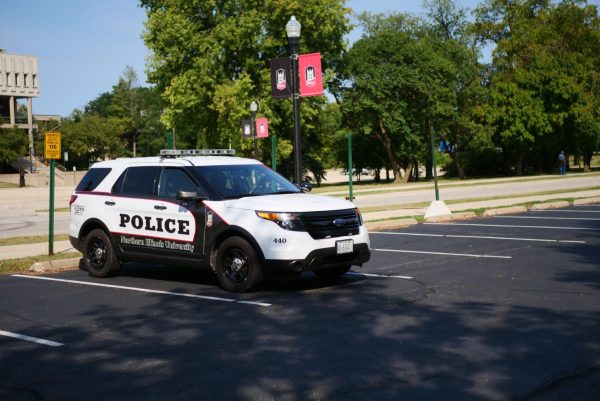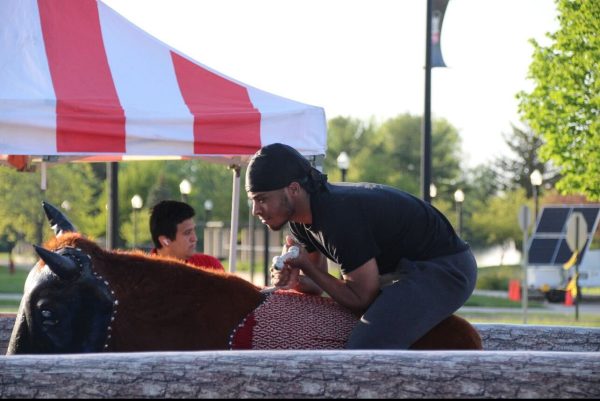Hispanics become largest minority
February 4, 2003
The U.S. Census Bureau reported Jan. 21 that those claiming Hispanic or Latino as their race and/or ethnicity moved ahead of blacks as the nation’s largest minority group.
While the Hispanic population is now America’s largest minority, it’s also the fastest-growing and most disadvantaged.
The news is ominous, considering half of America’s Hispanics are under the age of 25.
“People forget that we may be 50 percent younger than 25,” said Sylvia Fuentes, director of University Resources for Latinos. “But overall, our dropout rate is horrific; our poverty rate is horrific.”
Education
Just 57 percent of Hispanics age 25 and older had graduated high school as of March 2000, compared with 88.4 percent of whites, according to a Census Bureau population characteristics report released in March 2001.
The same report found that about one in four Latinos had less than a ninth-grade education, compared to 4.2 percent of whites.
Some younger Latino students do not have the same opportunities as others, Fuentes said, emphasizing an instructor’s important influence.
“I don’t know if teachers understand the effect they have on students,” she said. “We’re putting the word out there that higher education is a possibility.”
More than 35 percent of Hispanics were under the age of 18 as of 2000 (versus 23.5 percent of whites), so the URL tries to make itself more available to high schools and middle schools.
The organization only has four full-time staff members – including Fuentes – but NIU students have excelled as helpful volunteers, she said. They visit schools to recruit, advise and talk with students, as well as to let them know about opportunities.
“I see our role growing,” Fuentes said. “There’s more culture shock, and there’s still a language barrier … sometimes it’s difficult to understand certain concepts in English.”
She said NIU is growing as aggressively as it can given the financial hardships facing education.
Political influence
It remains to be seen whether the Hispanic population soon will evolve as a political presence. More than 29 percent – that’s about 9.5 million – of America’s Latinos were not citizens as of March 2000, which means they could not vote.
“The Hispanic voting presence in California and Florida is very important for future elections,” said Mikel Wyckoff, an associate professor of political science at NIU. “Both parties are clearly trying to appeal to this group. The fact that [29 percent weren’t citizens] hasn’t kept the Hispanic population from being a major consideration for national politicians. They’re very much concerned about that segment of society.”
While just 45 percent of Americans of voting age actually voted in 1998, only 32.8 percent of voting-age Hispanics cast a ballot.
“Locally, they’re the fastest-growing group in the Chicago area,” Wyckoff said. “So they could conceivably be quite a force in the city of Chicago down the road, and they’re perhaps better organized in Chicago than in some other places. The mayor has reached out to the Hispanic community in Chicago, and helped them recruit leadership, so those neighborhoods are simply better organized. They’re a more effective force than their statistics might reveal.”
Wyckoff said Republicans are watching the considerable growth in areas such as Aurora and other parts of the suburbs. If Republicans can’t appeal to that community over the long run, the flavor of politics in the suburbs also could change, he said.
“Right now, this Hispanic factor is pretty much working in favor of the Democratic party,” Wyckoff said. “I think the Republicans are behind, based on prior stances on immigration policy. I see the Democrats having a significant advantage there.”
Interpreting the stats
The Census Bureau’s survey process can skew these statistics. For instance, a person could’ve claimed Hispanic as his ethnicity and African-American as his race, said Amy Smith, a statistician demographer for the U.S. Census Bureau.
She said the Hispanic population is smaller than the black/African-American population alone or in combination with one or more other races.
“The difficulty in making this comparison is that the census treats race and origin as two separate concepts, as we’re mandated by the Office of Management and Budget,” Smith said.
Brian Harger, a research associate at NIU’s Center for Governmental Studies, said the double-counting factor is a very difficult thing to deal with.
“You’re talking about a group of people from a variety of backgrounds,” he said, “that the Census Bureau says can be grouped together.”












